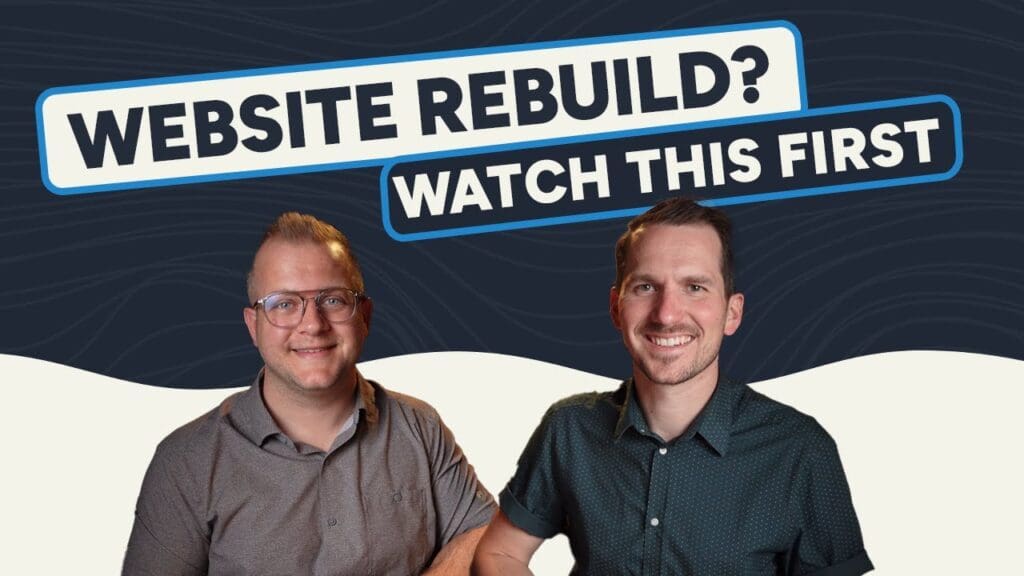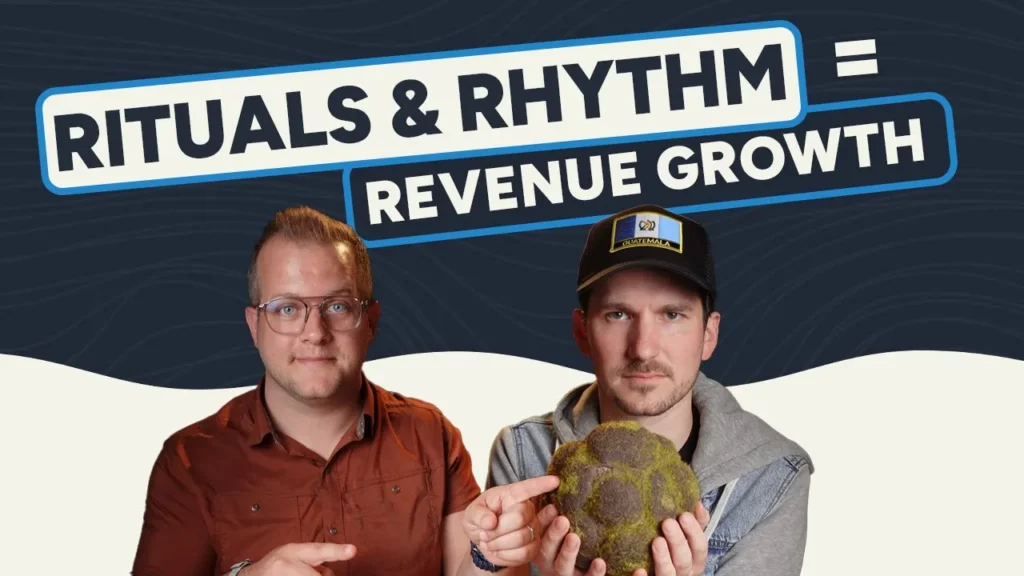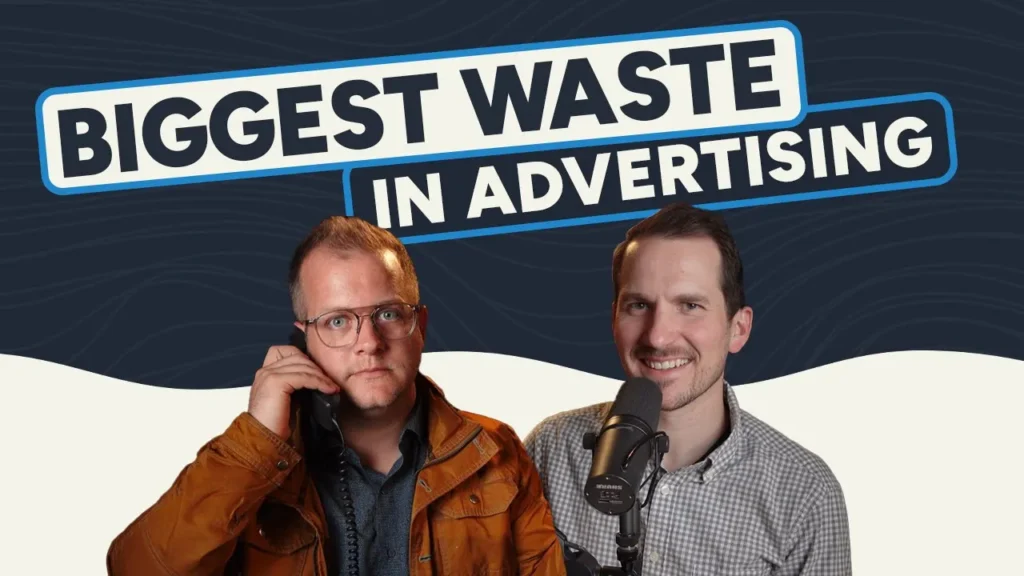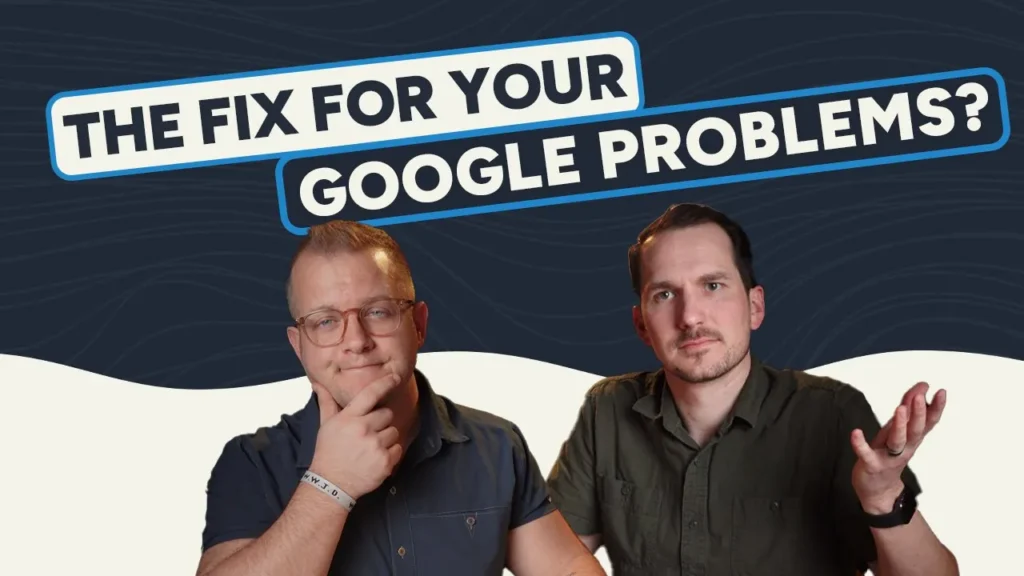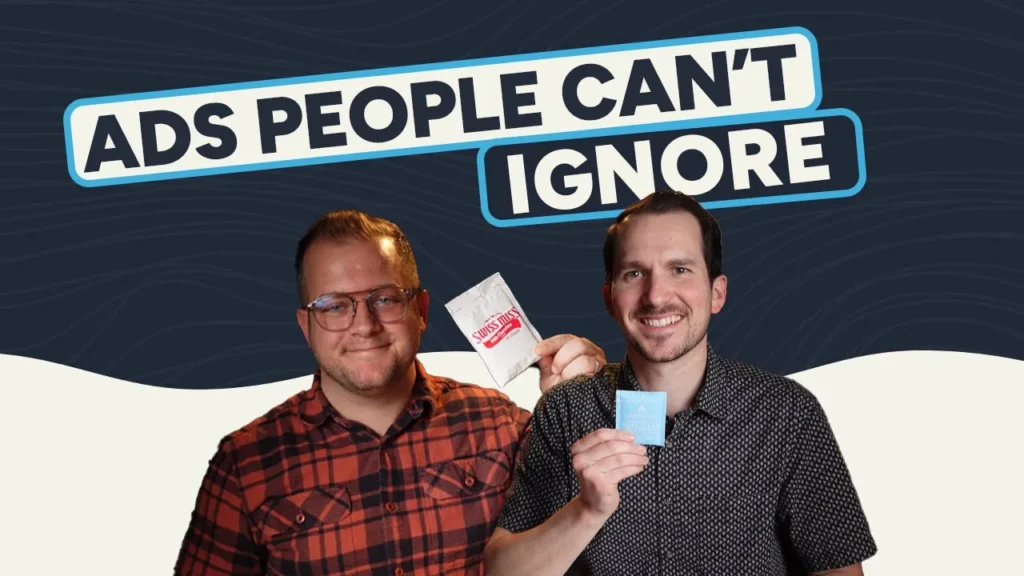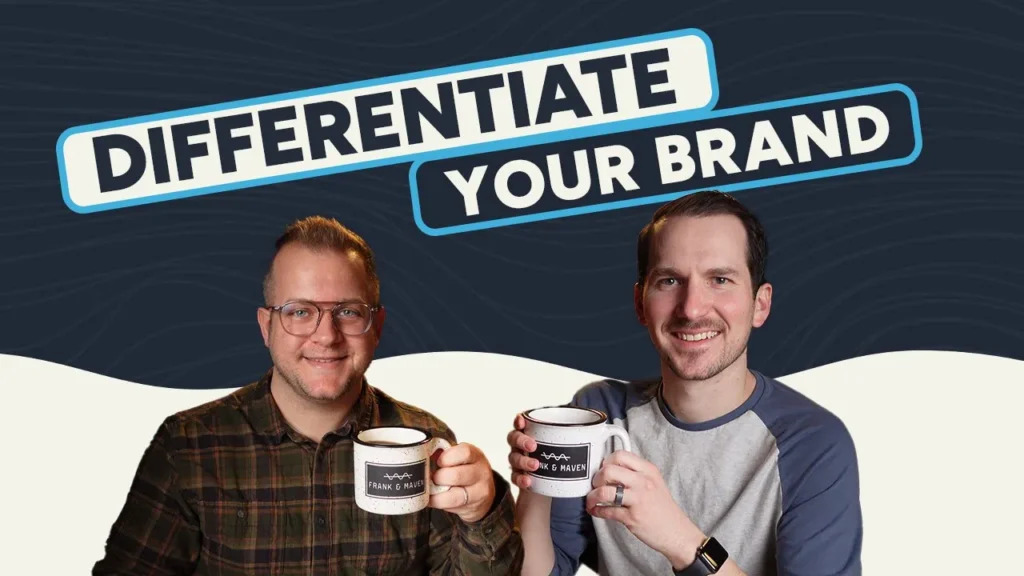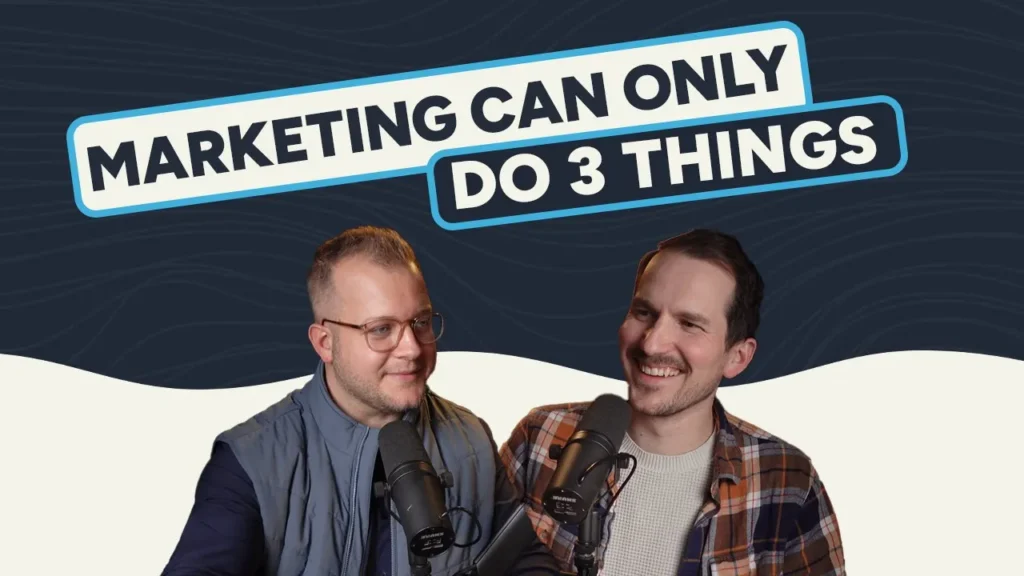The Three Types of Customers

Sometime soon, an advertising salesperson will ask you to spend money with them.
The pitch will go something like this:
We have a great audience!
Our audience will buy stuff from you!
If you only buy ads from us…
In most cases, you will like the salesperson. They will do a great job presenting you with information, and you will know in your heart that they really want to help you.
You will both be optimistic about doing business together.
You will both expect new customers to come from the ads.
But neither of you is fully sure how, why, or when you will see a return on investment.
This is because there is a missing memorandum of understanding in nearly every ad contract in America:
Customers don’t buy when they simply “hear about you.”
They buy when they are ready to buy.
And if you’re not careful, all the money you’re about to spend won’t amount to anything more than noise.
Rest assured, there is a solution.
You just need to align your product strategy, message, and media selection so that you are saying the right thing to the right customer at the right time.
There are three types of customers, and when you understand them, you will drastically improve the profitability of your entire advertising investment.
Today’s episode will teach you everything in quick order.
00:00 Intro
00:43 Most Marketing Plans Overlook This
02:39 The Three Types of Customers
05:09 The Customer Everyone Wants More Of
07:11 The Customer You Need More Of
20:45 The Customer You’re Probably Overlooking (The Gold Mine)
22:44 Recap
This Episode Hosted by:
Recent Episodes:
Rituals & Rhythm = Revenue Growth
The Single Biggest Waste In Advertising
Get New Episodes In Your Inbox:
We'll be back every Monday answering your real life marketing questions!
Listen to Audio Only:
Keep Sharpening Your Marketing Skills With The Maven Marketing Podcast
Rituals & Rhythm = Revenue Growth
Culture eats strategy for breakfast—and in this episode, Brandon Welch and Caleb Agee show you why rhythm…
The Single Biggest Waste In Advertising
You might think the biggest waste in advertising is bad creative, weak targeting, or outdated platforms. But…
IDKWNTHTB – Keep Showing Up!
Every business owner hits the wall. You launch the campaign, tweak the copy, show up every week—and…
Stop asking, “How did you hear about us?” (do this instead)
It’s lurking… tucked into a form on your website or maybe it’s a part of your sales…
IDK Who Needs To Hear This But: You Need To Fill One Glass At A Time
FREE MARKETING AUDIT: MavenMarketingAudit.com Get a copy of our Best-Selling Book, The Maven Marketer Here: https://a.co/d/1clpm8a Our…
How to Immediately Differentiate Your Brand
There are no more unique value propositions. You could invent the next big thing and you’ll have…
Marketing Can Only Do 3 Things
We can get distracted by all the activities and actions associated with marketing. Still, when it comes…
Caleb Agee 0:00
Every time you add targeting, it adds to the price. And we’re trying to reach that large group of people, irregardless of their demographic, their ideal customer nature. Target customer, however you want to define that, we’re trying to find everybody. Because Absolutely, even if Brandon’s not a potential tomorrow customer for me, he knows Nate, the camera guy, and Nate might be
Brandon Welch 0:26
welcome to the Maven Marketing Podcast. Today is Maven Monday. I’m your host, Brandon Welch, and I’m joined by my co host and productivity podcasts and yacht rock playlists. Caleb Agee, what’s up, everybody? We make some fantastic yacht rock playlists around here we do and we make some fantastic results happen with advertising. And today, we’re gonna unveil part of our secret sauce,
frankly, the biggest secret behind productivity and profitability in our campaigns, and something that is probably the most mentioned part of our book that we published a few years ago comes in all the time. It’s called the three types of customers. Every single marketing plan needs them. Every marketing plan needs them. Most marketing plans overlook them. Yeah. So today we’re going to teach you how to write the ads that speak to each of these three types of customers, and how to choose the right medias to reach those customers. The problem with most advertising is that we tend to think all advertising kind of does the same result. We just put $1 in, and then it spits a customer out. And while we all want that, and that has to be true, it doesn’t exactly happen in that order, the biggest thing that happens in failed advertising campaigns is we’re misaligning our message with a with the media, so we get a customer that either doesn’t exist or doesn’t quite get connected and give us the result that we want. Yeah, so I’m just going to come right out and say it, there are three types of customers, which really refer to the three modes that your customers could be in, and that’s today mode, tomorrow mode, or yesterday mode. Those are
the three types of customers, today, customers, tomorrow, customers, and yesterday. Customers, yes, and that’s important, because if you don’t address all three, you are at best leaving money on the table, but probably leading towards an unprofitable result. We have companies that are spending hundreds of 1000s of dollars come to our front doors, and what we realize quickly is that the reason it’s not producing the result that you want it to, even at high levels, is because you’ve put the wrong message towards the wrong audience. Yeah? And we want to align that and make a plan that you can methodically talk to all three customers in the way they need to be talked to, yeah, to get the result that you want. Yeah? So today, customers are actively looking for your product or service. Tomorrow, customers are not actively looking for your product reason today, but they will eventually, right? And then yesterday, customers have bought from you already, but you want them to return or bring their friends and family to as a referral. Right to you? Yes, and that’s the three, three types of modes. I’ll just use the refrigerator as an example. My refrigerator is not broke. I’m not looking for one. You can’t sell me one, no matter, really what kind of offer you make me. That’s right. But tomorrow, sometime tomorrow, probably like in the future, weeks, weeks, months, years in the future, I’m going to wake up and my milk is going to be warm, and I’m going to suddenly be in the market for a refrigerator. Exactly. Who do I call? Have you won me over at that moment? Because if you have, I pretty well go straight to you. That’s the tomorrow customer, and there’s a way to win me over long before that. And then the yesterday customer is, you sold me a refrigerator, and I had a wonderful experience, and now I’m gonna need a washer and dryer, and I want to come back to you, and I want to refer my mom and my you know, cousins and my grandma and my friends Nate the camera guy,
back to your store, yeah. So how you do that is different for each of those types of customers, and we’re going to talk
Caleb Agee 3:54
about that. Yeah. I think it’s really important to acknowledge that, if you think about it for yourself, right? You switch these modes all the time, depending on which thing you’re buying. You can think about the fact that you are in one of these buying modes for any service product that you might be interested in, and you’re you’re in today mode for very few right now. Yeah, I think we statistically unless it’s unless it’s a, you know, cheeseburger for lunch, or what are you doing for dinner tonight, or maybe a movie you’re going to this weekend, we talk about hospitality and entertainment, oxygen, yes, medical things. We are in the market for these things every day, but most products, like automobiles, like Home Improvement, like attorneys, like doctors, like
Brandon Welch 4:33
tax preparing services. We choose these very, very few times in life, and those are the products. The more you’re in that type of a product or service, the more the tomorrow customer probably means to you. But we still want to make people know like and trust you in that tomorrow form. We want to make them find you very easily and find that it’s very easy to do business with you. Yep, those two things when married equal about.
Exponentially better result out of advertising, that’s right. And then in the long term, we want to take those customers that we have earned. We want to keep bringing them back by continually loving on them. Yeah. So can you tell me about today customers? What do they care about and where can we reach them? Yeah, this is straight out of the Maven method. Um, first part of the of the strategy is the today strategy, and you have to first know that you’re going to position your product in a way that a today customer will buy you. If I’ve never heard of you, but I don’t otherwise have a connection with you. What am I going to compare you on price? Are you going to save me money? Convenience? How quickly can I make this happen?
Or speed. So price, speed or hassle is what we talked about. So, yeah, can you get it to me as quickly as another provider? Yes, I’m thinking, I’m thinking, Amazon is the master at this right?
I can click now and have it tomorrow. Why would I drive to the store, or why would I wait and special order it in your store, right? Yeah. So you have to be prepared, business, strategic wise, and you have to have a product and a margin and a customer service model that can compete on that.
If you don’t, you kind of lose out on the Today customer altogether. So it doesn’t even start with the messaging and media. It starts with the strategy. And most people that we work with and tend to want to make more money per customer. They tend to want to have few fewer but better customers. So this can be a challenge, but if you’re going to compete, you have to be able to compete on for price, speed and hassle, yes, and you’re going to use a media that is very targeted to people who are looking exactly this moment to buy today. They’re searching online, or we’re using a number of digital media tactics to intercept people that demonstrate buying habits. Yeah, Facebook a little bit more intrusive. We’re able to insert ourselves into, yes, their buying patterns. Practically, this is usually in our plans. This is Google search engine marketing and Facebook meta Instagram targeted advertising, where we have a lot of data on that person. Other things that are in the mix are targeted, email lists, sometimes mailing lists, sometimes trade shows, where you have a large amount of people buying now, like, that’s the that’s the thing has to be true with the media. Yeah. So that’s today. Customers. Tell me about tomorrow. Customers, tomorrow customers, here’s the interesting thing about a tomorrow
customer, if they don’t need your refrigerator or your car, or we’ll use the example, because we work with a lot of them, window and siding companies, there is exactly zero reason they would search that today if they’re not needing it. So how do I how do I sell to that customer? They’re not looking they’re not probably paying attention to my ad. If I say, Hey, do you need Windows? We have to reach them in a much broader format. We have to talk to them about broader needs. We call this relationships quality and commitment. Yeah. We have to offer offer them a relationship that is entertaining or value driven somehow. Yeah. We have to offer them a sense of quality about something we stand for that even though they’re not buying it today,
we can present it in such a way that they remember it for tomorrow. They remember we stand for a certain way of selling or towards a certain big bad wolf. Our window dealers are like against high bills, against drafty living rooms and against pushy salesmen. Yes, and even if I’m not buying those things today, my friend Dee, who puts that in her window ads in Kentucky, I start, start going, man, these breath of fresh air. I like her. Yeah, I don’t even know when I’m gonna buy Windows, but my subconscious starts to build this trust factor with her, right? But yeah, she just stood against three things I hate, and so I’m with her. And then in media,
we try to buy as many people. We don’t really care if they’re young, old, male, female, we just try to buy as many people as we possibly can on a daily basis. Yeah, and so what’s in the water is these commitment things I have, I show up to you daily, these relationship qualities I have, I stand for the same things you stand for, and these values
and like entertainment things that you just start to bond with me over time with and so we put them, typically on broad media. Yeah, that could be TV or radio in most markets in America. And for most products, that is still the way to reach the most amount of people at any given time. Could also be billboards, certain print based things, and occasionally we’ll use YouTube and some really broad digital video things for that. Yeah, and, and the reason we don’t maybe do as much targeting, let’s say, on those broad media, is because of the cost that’s involved. Yes, right? Absolutely.
Caleb Agee 9:35
Every time you add targeting, it adds to the price. And we’re trying to reach that large group of people, irregardless of their demographic, their ideal customer nature, target customer, however you want to define that, we’re trying to find everybody. Because Absolutely, even if Brandon’s not a potential tomorrow customer, for me, he knows Nate, the camera guy, and Nate might be yes, you know, I’m saying yes, and most people.
Brandon Welch 10:00
Will have 150 to 200 people within their circle of influence that sometime at some party or some work lunch or some conversation on Facebook that’s happening, and they’re gonna say, Gosh, somebody’s gonna say, I need a window company. And Carter’s gonna go, you should call these guys. Or Nate’s gonna say, you should call these guys. So we’re winning those people over with them. I’m gonna use the example of window replacement, because it’s one of the most it’s a everybody understands it, I think. But also it’s a really good example of what happens in a long term bu=ying cycle. So today versus tomorrow. Customers. If we have 100,000 people in our audience or in our potential market, just use that number, because it’s easy. Yep, the average window buyer, which is, by the way, is similar to H back and roofing and other really long term buying cycles. The average person buys Windows once every 33 years, right? Wow, a long time. That’s a long time. That’s a long time I might be in and out of business before then, right? But that means that 3% of homeowners per year buy that product of the whole market, right? In 12 months, right? And so, yeah, and so that if I divide that 3% out of 12 months, that means less than one quarter of 1% of people are in the market right now. Okay, so my audience just got really, really small of even people who are potentially buying. And if I divide that down to weekly, that’s point zero, 8%
percent of the market, right? Yeah. So out of 100,000 people, that actually, statistically means 83 people right now. Even give a flip about Windows? Yes. Okay. And so if you think about advertising that happens in a week and we go, which, by the way, some of you all listening, you’ll probably go, I’m gonna try it for a month or so. We’ve only got four weeks, so you got maybe two or 300 people that could even buy in your entire market. Or that’s right,
what happens is you just went out and said, if you’re thinking about buying windows, buy them for me. And yeah, even if the stars aligned and all 80 of those people were sitting in front of your ad, out of the 100,000
people, it’s just 80 of them, right? And you just rendered your ad useless. If that’s all you talk about. If you just use today language with a tomorrow media with like broad, broad, broad people who weren’t asking to see a window ad,
you essentially render your ad useless to 99,099
920 people, yep, right, yes, and the other 80 heard you, and maybe they take action, and maybe, in a lot of cases, the 80 is enough to pay the ad bill. But wouldn’t it be better if we had something that all 99,920
extra people would sink their teeth into? Yeah, wouldn’t that be better? That would be so much better. Be so much better. This is, this is the art of earning a tomorrow customer, and it’s something we do a lot of. Something we do a lot of here at Frank and Maven for clarity. For clarity, we spend millions of dollars on search engine, Facebook and all of the today medias. We spend millions of dollars on broadcast and all of the other tomorrow medias and yesterday medias as well. We’ll talk about those in a minute. So I want to win over those 99,000 people, because guess what? Next week, there’s going to be another 80 in the market, and the next week there’s going to be another 80 in the market. And over a year’s time, that actually turns into a sizable people, amount of people, stacking them up in three years time. What if I’m winning those people over before it gets to that, you know, two, year three, year five, year mark. The longer I do it, the longer I win them over, the more they’re probably likely to choose me. And what we see in our client campaigns that are heavily committed to the tomorrow customer is that over time, less people start searching for show me a window company in Kentucky, or show me a window company in Tulsa, or show me a window company in North Carolina, and they start searching for our clients names. They start searching for D millby, they start searching for Keith Sims. They start searching for Tyler and Ashley Smith and and, you know, Greg and all the people that we work with. So
that is a beautiful thing, because you’ve won them long before. 50 other competitors are standing there at the finish line saying, Come try us. Right? They’re like, I don’t need to try you. I already know and like and trust Dee and Randy and great, right? Yes, so
that is the art of a tomorrow customer, and that is why that frankly, if you’re an advertiser watching this video, if you’re on our website, if you’re listening to our podcast, let me just tell you, in America right now, that is the that is the thing that most advertisers don’t have, the courage, the smarts or the strategy to do. And the secret behind the millionaires that we’ve
made through advertising is that’s the biggest thing. Yeah, everybody wants the today customer, by all means, be great at the today customer, but when you’re great at the tomorrow customer, the today customer comes to you easy and guess what, they’re willing to pay you more money, they’re willing to skip competitors, they’re willing to shop you less. They’re willing to trust you take your word for it, which is the high quality relationship we always want. But it’s just, instead of trying to build it in a, you know, a one week or a couple sales interactions, we’re building it over months and years. What’s true about people?
Who are married,
they’re committed. They’re committed to each other. Yeah, they built a relationship over time, right? Yeah, they probably didn’t flip open their app and say, Who can I go on a date with right away? And, you know, skip the steps. They probably met in some sort of quality environment, quality. They probably had a commitment to each other to learn and get to know each other over a long period of time, and they probably waited for a while before they asked for the action, right?
And so the same is true for every human being, every friendship we need to build relationships over time. That is the art of a tomorrow customer, yeah, I think that happens.
Caleb Agee 15:40
You covered this slightly, but it happens in how we speak to them, which, for the today customer, we’re talking about the thing usually, right? It’s just right there next to the product you’re selling. You know I’m saying, so if I’m talking to a today customer,
I might talk about the window that’s completely broken and that it has to be fixed today, right? However, that works, but for the longer tomorrow, customer, I’m talking about something that is relatable to, you know, homeowners at large. That’s where we go to utility bills. We talk about being able to enjoy your home, the value of your home improving, and so people really connect with it’s a little bit of a higher level, but you are connecting with them. And if you’re a good ad writer, you can take that higher level and then pivot it towards your product and lead, lead the customer to understanding that you are the way to have better utility bills or something.
Brandon Welch 16:35
Yeah, effect most people when it comes to home improvement. She’s just use that as an example. They have a they have a list that’s, you know, 510, 15 things long. You know, they’re gonna paint the house sometime soon. They’re gonna get a new fridge. Sometime soon, they’re gonna have their HVAC worked on sometime soon. And Windows is somewhere on that list in this example, right? Yeah.
But if all along d is going, aren’t you tired of being drafting your living room? Ain’t nobody got time for that. You know, what you need is be warm and cozy. And this is the things we put in our ads, right? This is a tomorrow campaign, yeah, now online
and on their website, and on the on Google and on Facebook and on the our targeted advertising, we may have little hints of that messaging, but we’re using very direct to date messaging. We’re saying price. Yeah, most window companies, by contrast, say, well, I’ll schedule an appointment and we’ll come out and give you a high pressure sales pitch, essentially what they’re saying, but they make it very fast. They speak to price very directly, and they take away all the hassle, because they go, You know what? You don’t need a big presentation until you’re ready. Click here and we’ll give you a price right over the phone. Yeah, we’ve got a guy who’s, who’s saying, uh, 10 windows start at blank price. Yeah, that there’s that takes all the question out of it.
Caleb Agee 17:49
I know exactly what I’m paying for that. And that is price, speed and convenience. Is like, well, that’s competitive price. I’m gonna, I’m gonna see what that would take.
Brandon Welch 17:58
That’s its own type of brilliance. So speak to the today customers. The today customer will hear 10 windows for you know, 5999 right? Yep. The tomorrow customer stopped before you said, 5999 because they don’t even care. They’re they don’t need Windows. You can’t sell windows, right? Don’t care, unless it’s a cheeseburger when I’m hungry at lunch. You can’t sell it to me, right now. You got to wait. You got to build that up. Yeah? Tomorrow, tomorrow. Language. We talked about our friend Dee. She’s talking and Brandon, and they’re talking about, you know, all these values and these things you ought not to stand for. And by the way, the biggest thing we’re doing there is we’re doing it in an emotional way. We’re entertaining them.
We’re making them laugh. They’re making you laugh. We’re making them do goofy, funny things, singing songs. We’re singing songs. This is with jingles having fun, yep, yes, yeah,
Caleb Agee 18:43
you’re connecting with everybody in the house, and it’s hard to ignore. That’s, that’s the fun thing about, about tomorrow. Marketing, if you do it right, it should be enjoyable, or it should be emotionally engaging. It should make you, you know, Toyota or Subaru have these commercials that make you cry in 30 seconds. You know, there’s, there needs to be some sort of emotional pull that you have from that tomorrow marketing, and you remember it, you’re connected, and you can’t you’re okay with it coming back on at the next commercial break, because you’re like, Wow, that’s a good ad. Absolutely.
Brandon Welch 19:14
So les Bennett and Peter fields, known as the godfathers of advertising effectiveness. Wouldn’t you like to hear from them? For years and years. This is just stuff that a lot of fancy advertising guys assumed, and all the data people were like, prove it to me. And these guys were like, okay, so they did a 10 year study, 10 years Okay, on to determine on how advertising really works. And they wrote a great book, which I’ve linked to in this podcast. And there’s a lot of really well written articles on their findings.
Brandon Welch 19:44
They found essentially three things, the longer a customer is emotionally primed to you, the more likely they are to buy so essentially, the longer you do it, the longer it works and it has to be emotional,
they found that they are more likely to be a profitable customer. This is billions. Dollars of advertising study over 10 years. Right the law, the more likely you do that or sorry, the longer you do that, the more likely they are to be profitable, and the more emotional you go with your campaigns, the better they work. So the more you make them laugh, cry or get angry, is what we say around here. Yeah, better. And so
imagine a roofing company that’s in this kind of thing. One of the things we say when the rain drops are falling and your ceiling is a sop, and just remember your solid guys, it’s solid roofs, right? Solid roofs. I don’t sing the jingles around here, but I do very much endorse them, and sometimes they let me write them. And so that’s just floating around in people’s heads. And it’s just a smiley little laughy, little silly little campaign. We’ll link to it in the notes here, yeah, as an example of one our, one of our tomorrow campaigns, but you’re trying to make people emotionally bonded long before the sale. That’s right. Last thing, last thing, yesterday, customers. Yesterday, customers. This is the gold mine that from what was it a few weeks ago? You’re talking to Nick about those customers that you have Yes, right in your pocket. Yeah, this guy’s created hundreds of millions, if not billions of dollars in sales in his career. Nick Gordon, go back and look at that episode. He’s like, there’s only, there’s only, basically, you know, one two reasons people stop buying from you. Either did a bad job or, you know, you stop asking him. Stop asking him. Yep. Don’t stop asking them, yes, you have a yesterday customer. If you’ve been in business six months, you’ve got a gold mine. And all we’re trying to do here with our email list or with our customer appreciation events, that’s the media, by the way, really simple media. Give them hot dogs, tell them you love them, send them funny things in email, and maybe hopefully, we get them together our past customers for some other greater good. We help. We get them to help us donate to a cause, or we get them to help share some goodwill in the community. Yeah, just don’t stop talking to them. Yeah, I think this is a fear of a lot of business owners. I don’t want to bug my last my past customers. I don’t want to annoy them. Yeah, here’s the deal, if, if you’re annoying, fill and subscribe, and that’s going to be okay. But if you are bringing them content, if you’re I hate the word content, because that’s the bucket that this comes in. But if you are writing to them letters that they are willing to read, that add to their life, they add value, tribal bond and support, then yes, they will be happy to get your email for us. That’s, frankly, Friday. Yep, we don’t. There’s not a single thing I’ve ever talked about business, ever, ever. Yeah, we talk about life and happiness and communication and how to get more out of your relationships. And we just, we do that every week. Yeah, and you’re happy to get it, you’re happy to hear it. And if you aren’t,
go down the bottom of our website and subscribe to frankly Friday, Maven, Monday. Yep, that’s Frank and maven.com Yes, okay, there recap, recap. That’s yesterday. Customer. Just keep talking to them. Add value. Tell them how to get more out of the product that they just got tribal bond with them by doing something bigger premium towards a community cause
or simply support them when they ask education, there’s new updates about your product. Yeah, education is really powerful there.
Caleb Agee 23:07
So today, customers price, speed, hassle, yes, right, we’re looking at that’s the strategy and the message and the message, and then the media is targeted. Media, Facebook, Google,
Brandon Welch 23:23
Okay, tomorrow, customers be likable. Talk about your strategies based on commitment. We’re always going to be here when you need us, not you don’t have to do it now. We’re going to be here forever. Quality. We stand for something we you know, no pushy sales people. Higher quality experience something that is inherent to the way you specifically do your business. That’s quality. And then relationships, which is just being relationship worthy, be funny, be emotional, be serious. If your business or your cause cause calls for that, but they’re gonna build a relationship with you and see your personality before then we’re gonna use media that reaches a bunch a bunch of bunch of people, yes, as many people as we can afford, daily, okay, daily, and it’s usually TV and radio if you’re in a regional business, yep. Yesterday, customers talking about added value, tribal bond and support.
Caleb Agee 24:11
We want to make sure that we continue to add value to their lives, educate them, connect with them, bring a make a community out of your past.
Customers absolutely make them all feel like they are a part of a tribe, and then just continue to say, you know, saw this, thought of you. How could we, you know, get one thing you bought from us? Yes, just build them up in that way, and you’ll do that. This is probably one of the cheaper medias to use. You can build up an internally free list, virtually free. It starts free for sure. Depending on your list size, you use mailchimp.com, for free up to a couple 1000 people. If you got more than couple 1000 people, you’re gonna pay 3050, bucks a month, something like that. At the highest levels, you might be paying two or 300 bucks a month, yeah. What if you got one sale off that? Yeah,
Brandon Welch 24:58
yeah, half a sale. Pays for one sale a year, pays for the whole year, right? Yep, for most people. So
guys, that’s the three types of customers you need to have, all of them in your cuss and your marketing strategy. If you don’t, if you’re just going one angled, or if you’re trying to use a today message in a tomorrow media, we can help you fix that and align that and build a message that works best for all of them.
Subscribe to the Maven marketing podcast at Frank and maven.com if you have a question about that, we would love to answer it. This is our favorite topic. Maven Monday at Frank and maven.com that’s your email. You’re gonna email your question to that, and we’ll be back here every week answering your real life marketing questions, because marketers who can’t teach you why are just a fancy lie. Thanks for listening. Have a great week.

